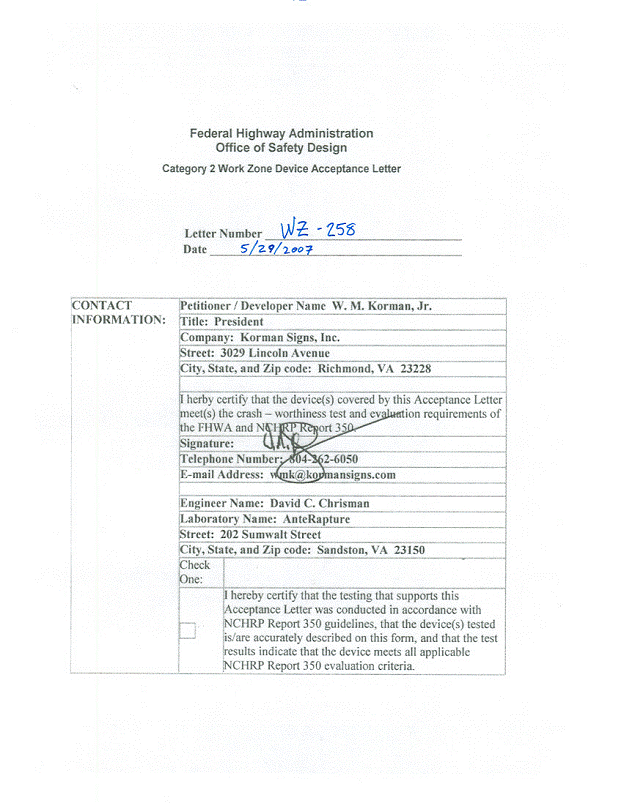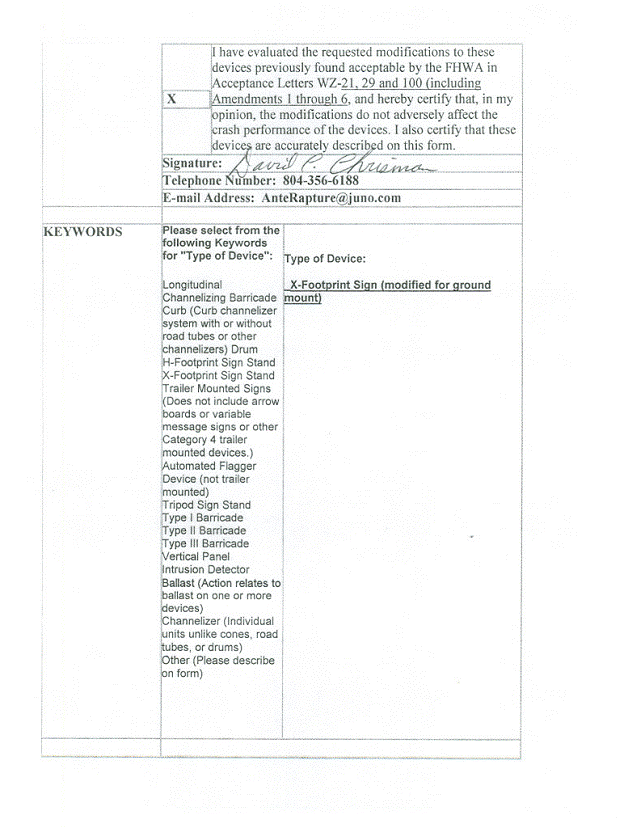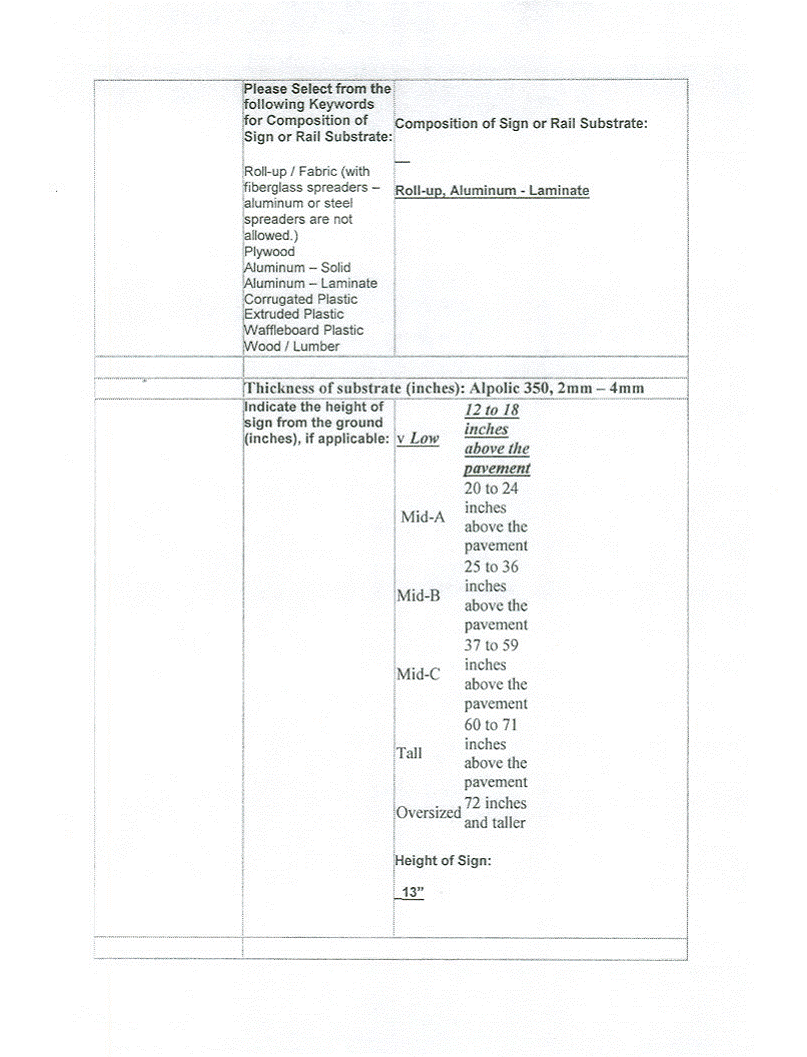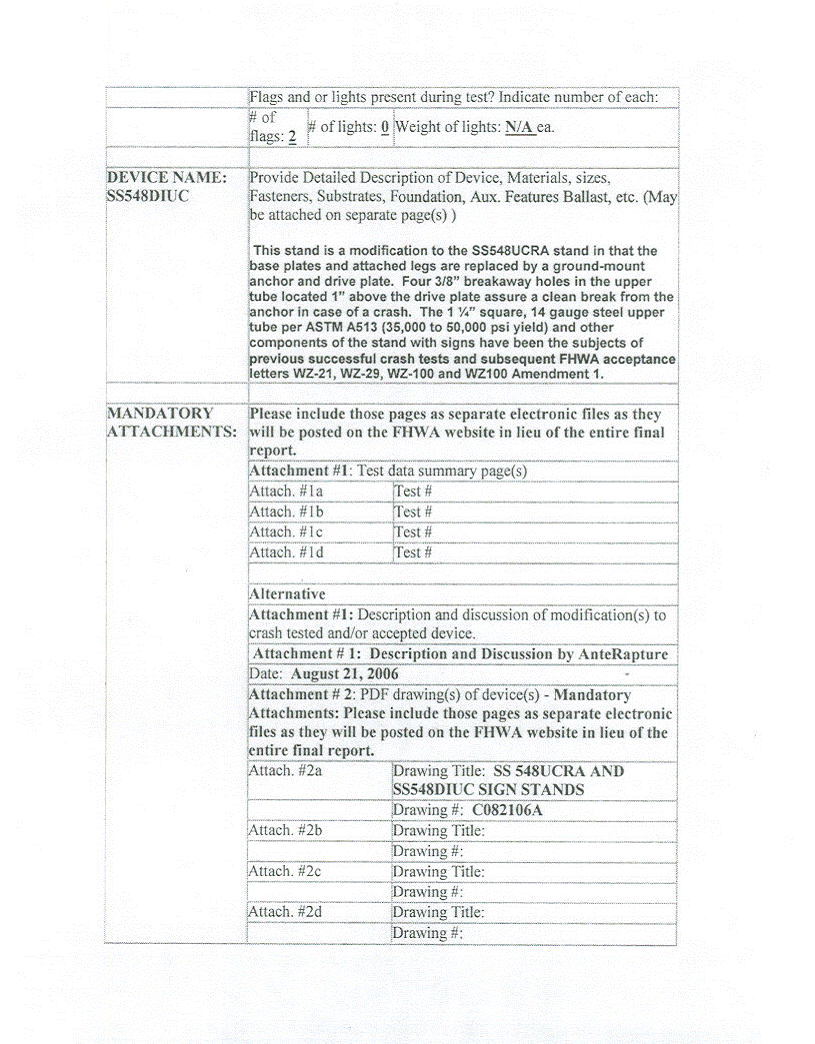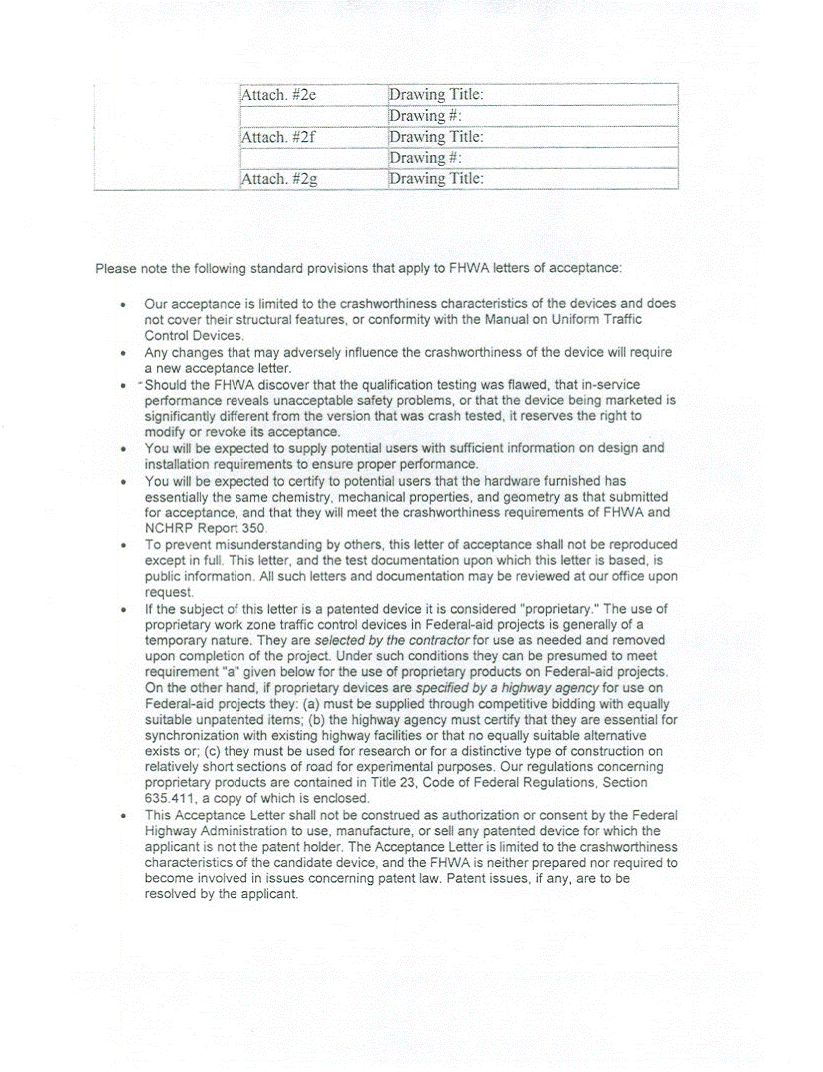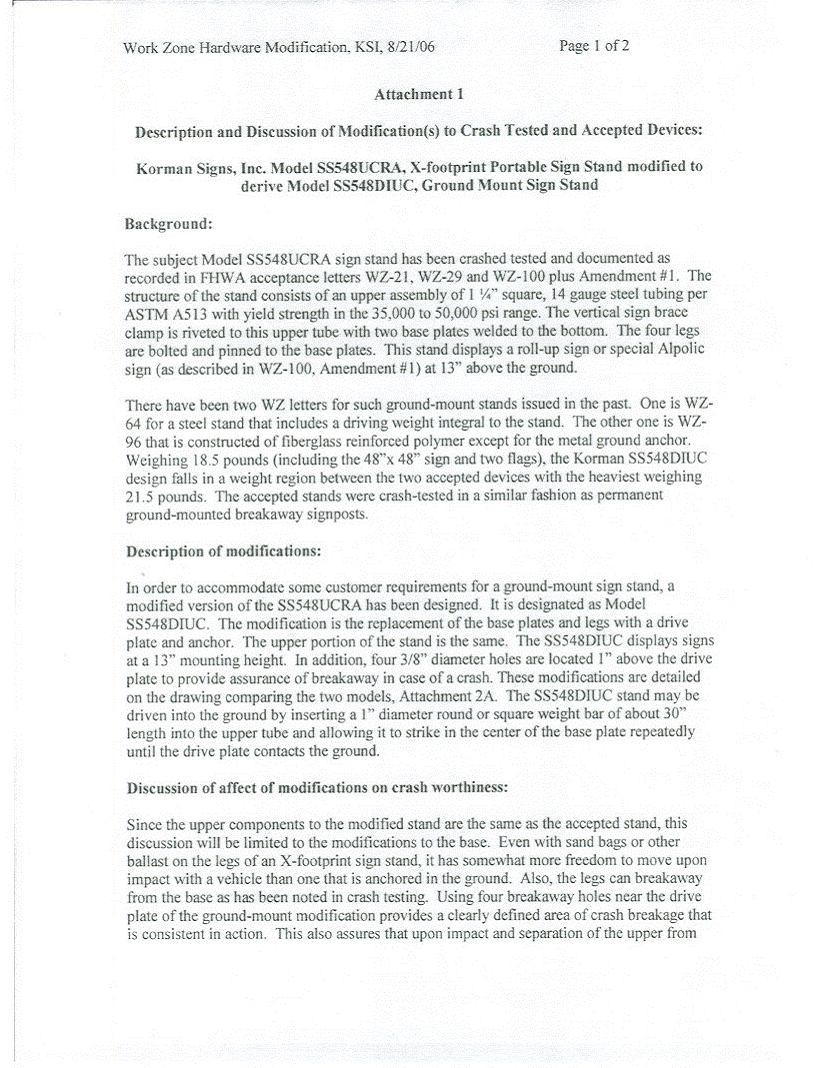  |
  |
|
|
|
|
|
|
|
|
|
In
Reply Refer To: HSSD/WZ-258 |
|
Mr. Bill Korman
Korman Signs, Incorporated
3029 Lincoln Avenue
Richmond, VA 23228
Dear
Mr. Korman:
Thank you for your August 21, 2006,
letter requesting the Federal Highway Administration's (FHWA) acceptance of
your company's Model SS548DIUC ground mounted sign stand as a crashworthy
traffic control device for use in work zones on the National Highway System
(NHS). Accompanying your letter was the
FHWA Office of Safety Design form that included a drawing and a detailed description
of the modifications made to create the SS548DIUC design from previously FHWA accepted
sign stand designs recorded in the FHWA acceptance letters WZ-21, WZ-29, and
WZ-100 Amendment #1. The Model SS548DIUC
drawing and detailed description are enclosed with the acceptance form. We agree that further crash testing is not
necessary for the Model SS548DIUC ground mounted sign due to the equivalent
design of your company's previously accepted sign stands. You requested that we find this sign stand
acceptable for use on the NHS under the provisions of National Cooperative
Highway Research Program (NCHRP) Report 350 "Recommended Procedures for
the Safety Performance Evaluation of Highway Features".
This letter is the acknowledgement of the FHWA's
acceptance of your request. The original
completed form has been modified by the addition of the FHWA acceptance letter
number and the date of our review, along with minor editorial changes. The form will be posted on our
Web site in the near future.
Please note the following standard provisions that apply to
the FHWA letters of acceptance:
· This acceptance is limited to the
crashworthiness characteristics of the devices and does not cover their
structural features, nor conformity with the Manual on Uniform Traffic Control
Devices.
· Any changes that may adversely influence the
crashworthiness of the device will require a new acceptance letter.
· Should the FHWA discover that the qualification
testing was flawed, that in-service performance reveals unacceptable safety
problems, or that the device being marketed is significantly different from the
version that was crash tested, it reserves the right to modify or revoke its
acceptance.
· You will be expected to supply potential users
with sufficient information on design and installation requirements to ensure
proper performance.
· You will be expected to certify to potential
users that the hardware furnished has essentially the same chemistry,
mechanical properties, and geometry as that submitted for acceptance, and that
they will meet the crashworthiness requirements of the FHWA and the NCHRP
Report 350.
· To prevent misunderstanding by others, this
letter of acceptance, designated as number
WZ-258, shall not be reproduced
except in full. This letter, and the
test documentation upon which this letter is based, is public information. All such letters and documentation may be
reviewed at our office upon request.
· The
Model SS548DIUC is a patented product and considered proprietary. If
proprietary devices are specified by a highway agency for use on Federal-aid
projects, except exempt, non-NHS projects, they: (a) must be supplied through
competitive bidding with equally suitable unpatented items; (b) the highway
agency must certify that they are essential for synchronization with the
existing highway facilities or that no equally suitable alternative exists; or
(c) they must be used for research or for a distinctive type of construction on
relatively short sections of road for experimental purposes. Our regulations concerning proprietary
products are contained in Title 23, Code of Federal Regulations, Section
635.411.
· This acceptance letter shall not be construed as
authorization or consent by the FHWA to use, manufacture, or sell any patented
device for which the applicant is not the patent holder. The acceptance letter is limited to the
crashworthiness characteristics of the candidate device, and the FHWA is
neither prepared nor required to become involved in issues concerning patent
law. Patent issues, if any, are to be
resolved by the applicant.
Sincerely yours,

George E. Rice, Jr.
Acting Director,
Office of Safety Design
Office of Safety
Enclosures
